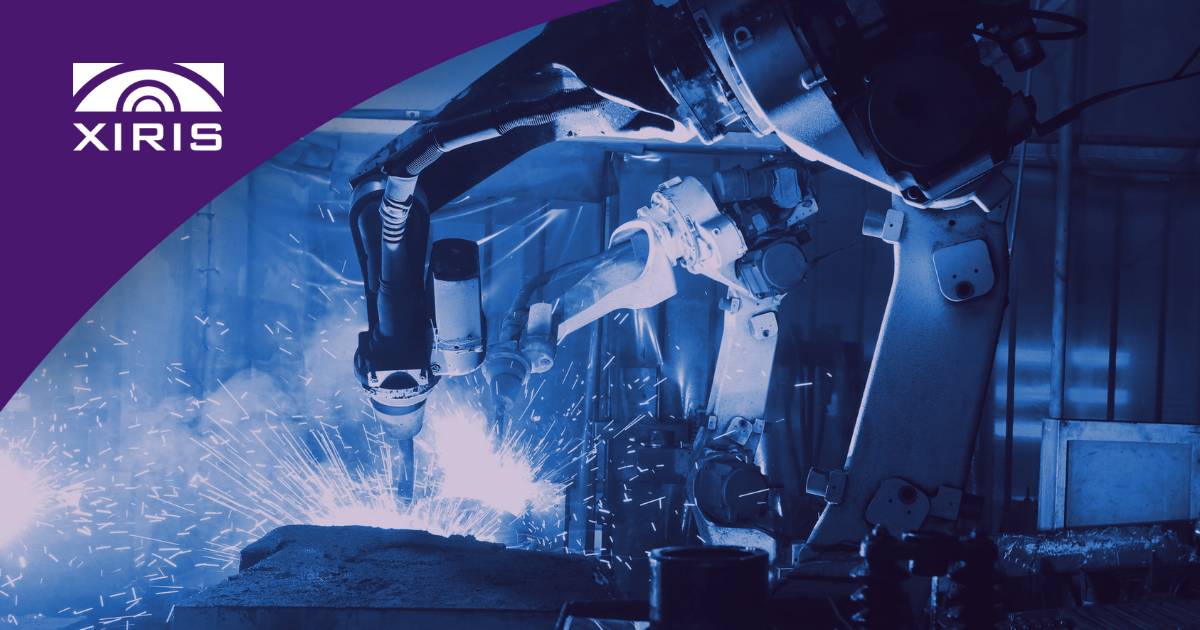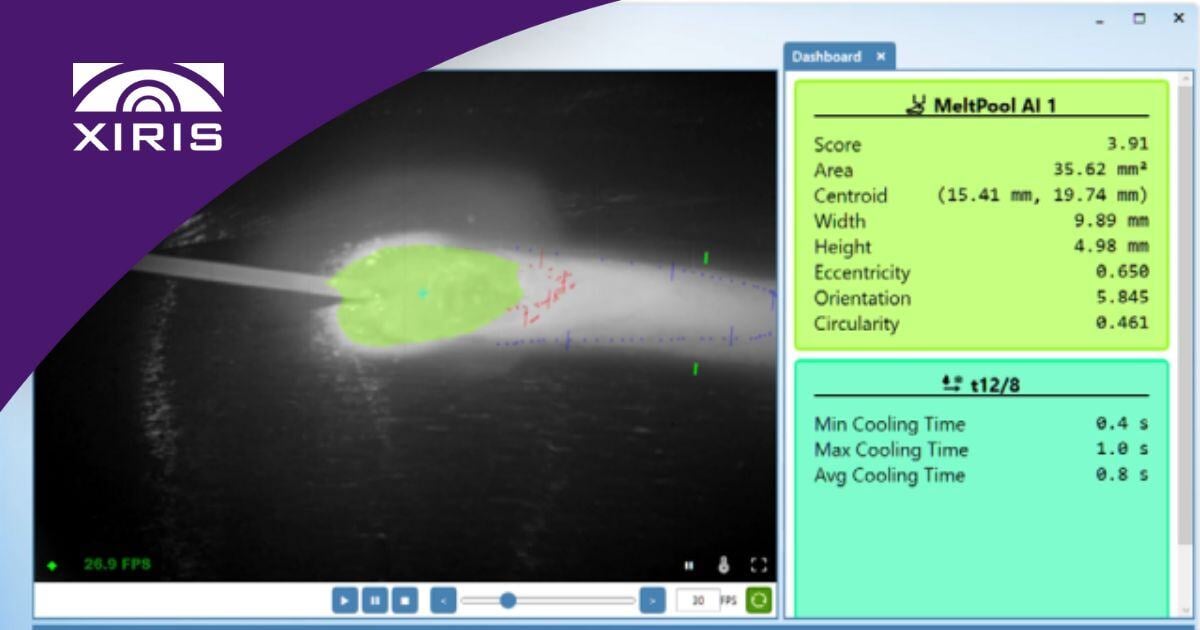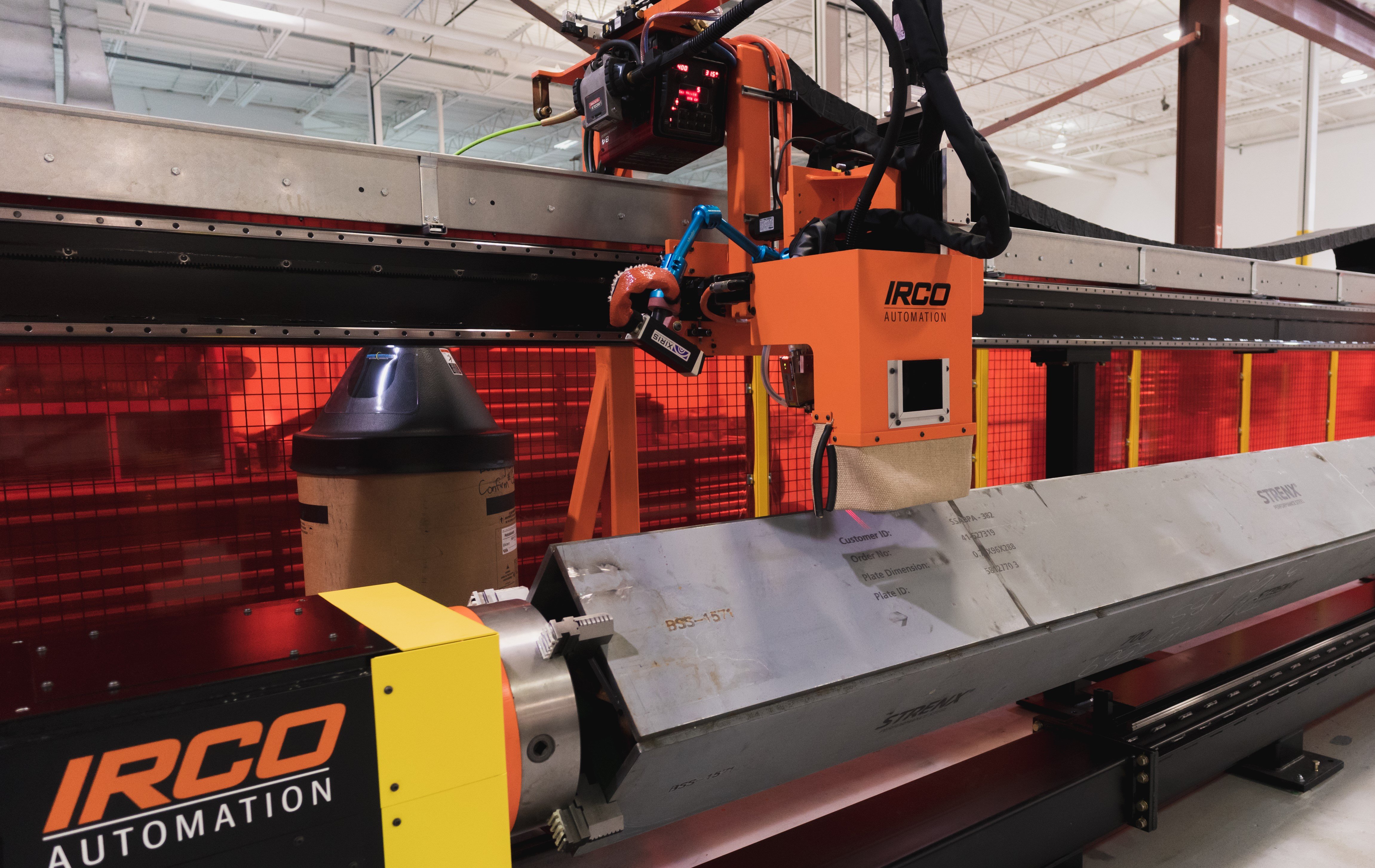In this article, we will explore the transformative impact of Shortwave Infrared (SWIR) thermal imaging on quality control of fabricated parts. Expect to learn what SWIR technology is, its unique properties, and how it is applied across industries. From monitoring high-temperature processes to ensuring the precision of metal additive manufacturing, we will delve into its advantages, challenges, and solutions tailored to modern industrial demands. By the end, you’ll understand why SWIR imaging is an indispensable tool for enhancing efficiency and maintaining product excellence.
XIR-1800 Thermal Camera System
Real-time temperature measurement with an exceptionally clear view of your process.
Download DatasheetUnderstanding SWIR Thermal Imaging
SWIR thermal imaging represents the best approach to capturing thermal emissions of hot metals. Before delving into its specific applications and benefits, it is essential to understand what sets this technology apart and why it is becoming a cornerstone of industrial quality control.
What is SWIR?
Shortwave Infrared (SWIR) imaging operates within the wavelength range of 0.9 to 2.5 microns, a spectrum uniquely suited for observing thermal emissions invisible to the naked eye. Unlike visible light imaging which operates in the range of about 400-750 nm, SWIR imaging captures subtle temperature differences, providing enhanced clarity for industrial monitoring.
The SWIR spectrum is particularly good for metal thermography as it has a number of advantages over other types of thermal cameras:
- Long Wave Infrared (LWIR) imaging is typically used at temperatures close to ambient with a limited temperature range. As such it is not really suitable to measure the high temperatures associated with hot metal. In addition, unlike SWIR, LWIR is very sensitive to small changes in emissivity.
- Mid-Wave Infrared (MWIR) imaging is a more complex imaging process because most MWIR cameras requires extensive cooling to provide stable temperature readings. As a result, such cameras tend to be quite delicate and expensive. The MWIR spectrum does not easily transmit through glass, requiring special lenses such as Germanium to function correctly. Finally, MWIR is also very sensitive to small changes in emissivity that greatly affect the temperature readings.
- Near Infrared (NIR) imaging is only suited for higher temperatures. However, as it is very close to the visible spectrum, it can be very sensitive to contamination from visible light that will tend to throw off its temperature reading capabilities.
The Unique Properties of SWIR Technology
A SWIR thermal camera is the best choice for measuring temperature of hot metal, using a shorter wavelength than MWIR or LWIR with lower measurement errors due to emissivity changes. It is also able to see through fumes and smoke and can use standard glass optics and does not need special cooling, providing a more robust, compact and lighter camera more suitable to welding and automation.
SWIR thermal cameras excel in environments where high heat, low visibility, or challenging lighting conditions prevail. Combined with high dynamic range (HDR) imaging, they can provide precise temperature measurement of hot metals, making them indispensable for fabrication processes requiring detailed thermal analysis.
Applications of SWIR Thermal Imaging
The versatility of SWIR thermal imaging has enabled its adoption of hot metal monitoring across a wide range of industrial applications. From monitoring welding or metal additive manufacturing process or other hot metal process such as in furnaces, SWIR thermal imaging technology is being broadly accepted as the best way to implement quality control across a range of fabrication applications.
Monitoring High-Temperature Processes
SWIR cameras are ideal for measuring temperature of hot metal in applications involving temperatures exceeding 350°C. They allow the creation of a 2D map of the temperature of an area of interest, providing operators the ability to visualize and track thermal points and gradients. The result is a detailed insight into heat flow patterns of hot metals, while they are heating or cooling. With proper application, SWIR cameras can help ensure efficient monitoring of a variety of industry processes such as primary metals melting, forging, welding, metal AM and glass production, among others, that can help to reduce errors and improve safety.
Video demonstrating temperature mapping in a spiral GMAW welding process using Xiris Xir 1800 thermal camera to identify heat flow patterns.
Inspection and Analysis of Welding Processes
In welding applications, SWIR thermal cameras enable detailed inspection and analysis of the melt pools by providing a precise way to segment the melt pool from the rest of weld environment in an image. Better segmentation of the melt pool can lead to more accurate indicators of the how well the welding process is running and provide better process control.
A video of Thermal Segmentation of a Melt Pool
By monitoring the cooling rates (e.g., t8/5 in steels) of the weld bead, a SWIR thermal camera can provide real-time feedback for the metal phase transformations of the cooling weld bead. This can lead to more consistent weld quality, reducing the risk of defects like brittleness or hot cracking.
Other features can be better detected through precise segmenting of a thermal image such as the tungsten electrode in TIG welding, or wire droplet analysis in applications where wire is used.
Inspection and Quality Control in Metal Additive Manufacturing
SWIR thermal imaging facilitates precise control over critical parameters in welding or metal AM processes. By capturing full temperature detail of an area of interest, many of the features found in welding can also apply to metal AM processes. However, in metal AM processes, an additional very important measurement is the inter-pass temperature between layers, which helps to determine if the previous layer is too hot on which to deposit more material. This is important as it can help operators detect process problems early. The result is better structural integrity, a reduction of defects, and better mechanical strength of finished fabricated components.
A video of a multi-pass deposition process showing inter-pass temperature readings
Advantages of SWIR Thermal Imaging for Quality Control
As fabrication industries strive for greater precision and efficiency, SWIR thermal imaging offers several unique advantages that make it an indispensable tool for achieving higher standards in quality control:
Improved Accuracy and Precision
SWIR cameras provide accurate 2D temperature mapping, eliminating the limitations of point-based sensors such a pyrometers or thermal crayons. The enhanced level of precision is essential for applications like high-speed welding and furnace monitoring, where even small temperature variations can impact quality.
A video of a GMAW welding process with Line Profile and Pixel Reader measurement tools
Traditional point-based sensors often fail to capture temperature distributions accurately. SWIR cameras instead offer 2D thermal maps of an area of interest, ensuring consistent and reliable measurements across a surface acquired all at once.
Real-Time Monitoring Capabilities
With immediate feedback capabilities, SWIR cameras allow operators to dynamically adjust process parameters. Whether it's controlling a weld pool, adjusting weld power parameters or refining a laser process, the technology enhances operator responsiveness and ensures optimal outcomes.
SWIR imaging provides immediate feedback, allowing operators to adjust processes dynamically. Whether monitoring a weld pool or assessing a high-speed laser process, the technology enables unparalleled process control.
A video showing metal transfer in a Pulsed GMAW Process
Detecting Microstructural Transformations
SWIR imaging provides detailed insights into thermal cycles, helping identify key phase transformations in metals. This ensures that the mechanical properties of welded joints and AM parts meet stringent quality standards, enhancing durability and performance.
A SWIR camera’s ability to monitor thermal cycles helps identify phase changes in metals, crucial for ensuring the mechanical strength of welded joints and AM layers.
Enhancing Process Efficiency and Product Quality
SWIR thermal imaging can also improve process efficiency by identifying and addressing inefficiencies in real-time. Operators can optimize heat input and detect irregularities, ensuring uniform thermal distribution. For product quality, SWIR imaging enables precise control over microstructures, meeting stringent industry benchmarks and reducing waste.
Introducing The XIR-1800 Thermal Camera
Xiris’ XIR-1800 Thermal Camera is a versatile and high-performance tool that brings unparalleled capabilities to industrial environments. With its SWIR and High Dynamic Range (HDR) imaging capability, the camera has been designed to provide measurement sensitivity to temperatures ranging from 350°C to 1800°C, generating precise, real-time thermal data essential for process optimization. Its robust design makes it a trusted choice for industries like welding, metal additive manufacturing, and other metalworking applications. The HDR imaging capability provides the camera with the ability to see a greater range of temperature with better precision than would be otherwise possible. The combination of a SWIR and HDR imaging in a robust housing allows it to excel in capturing critical data for process control and quality assurance.
Applications and Features for Industrial Use
The XIR-1800 is packed with advanced features that cater to dynamic and high-speed industrial processes:
- High-Speed Frame Rates: Achieves up to 200 frames per second for capturing detailed thermal events in processes like pulsed laser operations and high-speed welding. With reduce area of interest, image capture can go up to over 500 frames per second.
- Wide Temperature Range: Monitors the most useful temperature range of hot metals with accuracy, ensuring critical process control across a variety of metalworking applications and beyond into other industries such as glass manufacturing and semiconductor manufacturing.
- Advanced Imaging Capabilities: Provides high resolution thermal maps suitable for detecting minute details such as weld impurities, pinholes, thermal gradients, and microstructural changes.
- User-Friendly Integration: In combination with Xiris’ advanced software, WeldStudio, the SWIR camera has been designed for rapid seamless integration with industrial systems, supporting real-time data analysis and process adjustments.
With its combination of precision, temperature range, speed and accuracy, the XIR-1800 is setting new benchmarks in industrial SWIR thermal imaging.
The Future of SWIR Imaging in Quality Control
The adoption of SWIR thermal imaging in fabricating applications is poised to expand as various industries recognize its unmatched capabilities. Emerging advancements in technology and novel applications will drive its integration into more sectors, reshaping how processes are monitored and optimized.
As industries continue to adopt SWIR thermal imaging, the future holds immense promise. Technological advancements and expanding applications will drive further innovation in quality control practices
XIR-1800 Thermal Camera System
Real-time temperature measurement with an exceptionally clear view of your process.
Download Datasheet



.gif?width=288&height=364&name=XVC%201800%20gif%20Landing%20page%20(1).gif)




